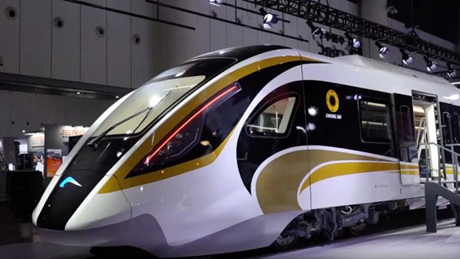Train Traveled 1/5 of the Distance: Unlocking the Secrets of Efficient Journey Planning
Guide or Summary:Understanding the JourneyEfficient Journey PlanningUtilizing Technology for Optimal PlanningConsidering Environmental FactorsIn the bustlin……
Guide or Summary:
- Understanding the Journey
- Efficient Journey Planning
- Utilizing Technology for Optimal Planning
- Considering Environmental Factors
In the bustling world of transportation, the path from origin to destination is as intricate as it is vital. For those who embark on journeys across vast terrains, the art of planning an efficient route is paramount. This article delves into the strategic approach of determining the optimal path when a train has traversed merely 1/5 of the total distance. By understanding this crucial stage of the journey, travelers and logistics professionals can significantly enhance their travel times, cost management, and overall experience.

Understanding the Journey
When a train embarks on a journey, covering the initial 1/5 of the distance is merely the beginning. This initial stretch sets the tone for the entire trip, influencing subsequent decisions and adjustments. For example, if the train encounters unexpected delays or adverse weather conditions during this initial phase, it may necessitate alternative routing or increased time allocation for subsequent sections. Conversely, a smooth and punctual start can set the stage for a seamless continuation of the journey.
Efficient Journey Planning
Efficient journey planning involves a meticulous analysis of various factors, including terrain, weather conditions, and potential delays. By analyzing these variables, travelers and logistics professionals can devise a route that minimizes travel time, costs, and potential disruptions. For instance, if the train has traversed 1/5 of the distance and encounters a stretch of track prone to flooding, rerouting the train to a safer path can prevent potential delays and ensure a smoother continuation of the journey.

Utilizing Technology for Optimal Planning
In today's digital age, technology plays a pivotal role in optimizing journey planning. Advanced software and algorithms can analyze vast amounts of data, including real-time weather conditions, traffic patterns, and historical data on train performance. By leveraging these tools, travelers and logistics professionals can make informed decisions that enhance the efficiency and effectiveness of their journeys. For example, predictive analytics can forecast potential delays and allow for proactive measures to mitigate their impact.
Considering Environmental Factors
Environmental considerations are increasingly integral to efficient journey planning. As climate change impacts become more pronounced, understanding the environmental impact of travel routes is crucial. For example, if the train has traversed 1/5 of the distance and encounters a stretch of track that contributes significantly to carbon emissions, rerouting the train to a more sustainable path can reduce the environmental footprint of the journey.

The initial 1/5 of a train journey is a critical phase that sets the stage for the entire trip. By understanding the importance of this phase and employing strategic planning techniques, travelers and logistics professionals can optimize their journeys, enhancing efficiency, cost management, and overall satisfaction. With the aid of advanced technology and a commitment to environmental sustainability, the art of efficient journey planning continues to evolve, ensuring that the path from origin to destination remains a seamless and enjoyable experience.